Tree Diseases Caused By Bacteria
Fire Blight
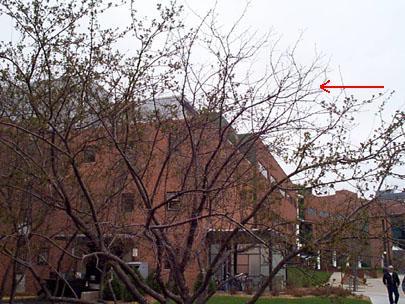
Fire blight in flowering crab. Arrow points to infected branch.
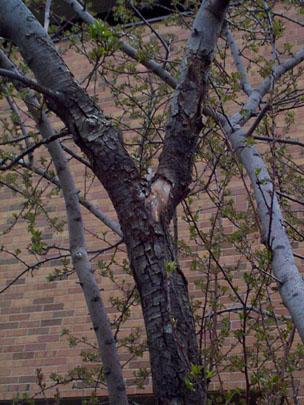
Canker on main stem of flowering crab apple. Bacteria overwinter at the edge of the canker and ooze out in the spring.
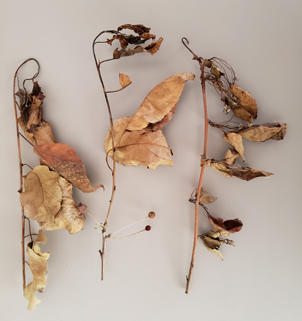
Branch symptoms of fire blight showing curling of the branch tips (shepards crook) and dark brown dead leaves.
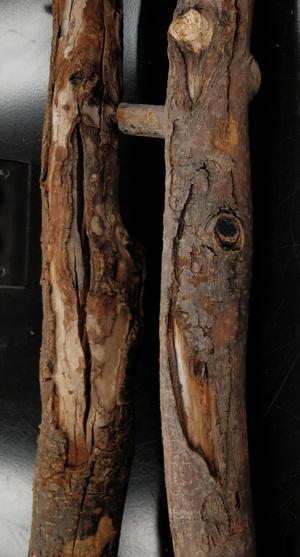
Cankers on branches caused by fire blight.
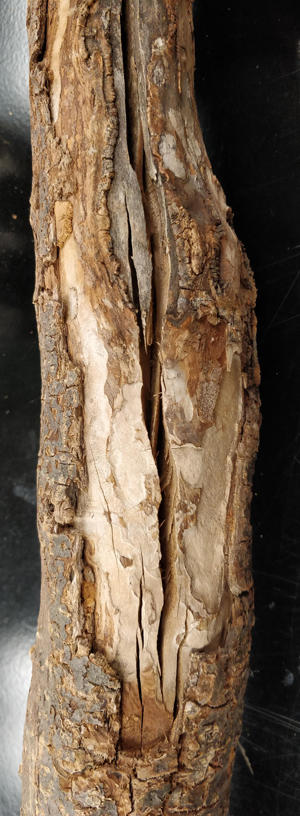
The bacterium causing fire blight overwinters at the edge of cankers and progressively moves down the stem killing the tree.
Crown Gall
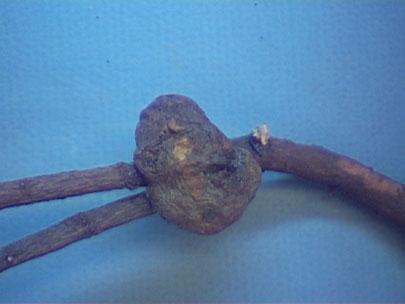
Gall caused by Agrobacterium tumefaciens on roots of tree are found at the ground line.
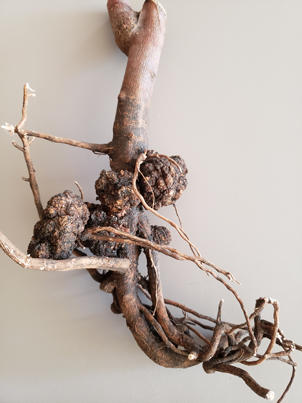
Galls formed on an apple seedling at sites where there were wounds. This disease can be a problem in nurseries especially on grafted materials.
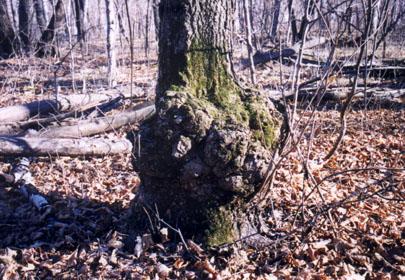
Large gall on main stem of tree. These galls or burls are likely caused by Agrobacterium tumefaciens and result from hypertrophy and hyperplasia of xylem cells.
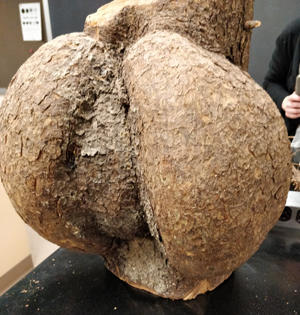
Galls can grow to very large sizes and odd shapes as you see on this one on spruce from northern Minnesota.
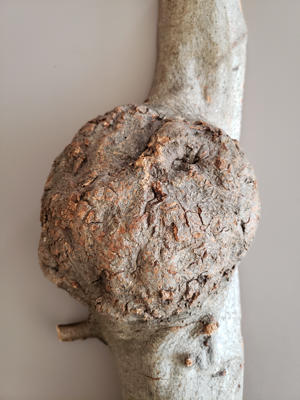
Uncontrolled growth of the xylary cells produce galls. This one is on hickory.
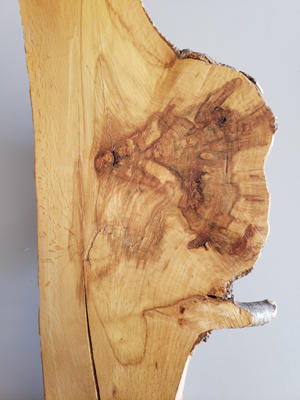
A section through the above gall showing the wood inside. Galls produce disorganized cells and very dense wood. Some discoloration is present but the wood is very sound.
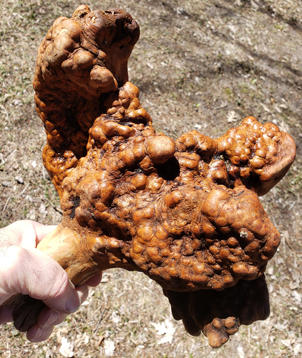
Galls can have very unusual structure and disorganized growth.
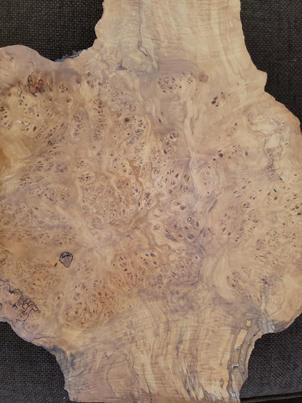
Some galls have a proliferation of bud tissue in addition to unusual wood growth. Cutting through these bud initials reveals what people call a "birds eye" pattern. This is a section through a gall on maple.
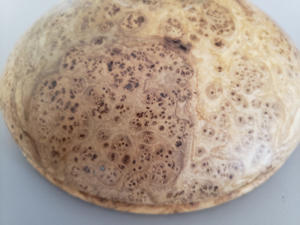
The patterns in burled wood make them ideal for making interesting and attractive items such as this wooden bowl.
Wetwood
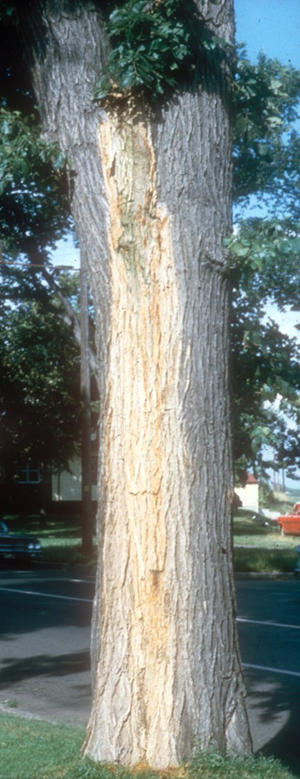
Wetwood releases a slime flux from wounds. This area of slime deposit looks white in winter and when the slime is not actively flowing out.
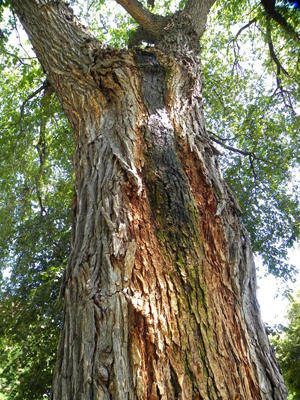
In summer when the bacteria are active inside the tree, polysaccharide slime is produced and it oozes out of wounds.
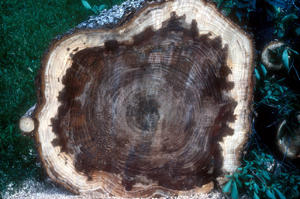
Wetwood can be extensive inside elms and have a very dark coloration but it does not appear to adversely affect the growth or health of elms.
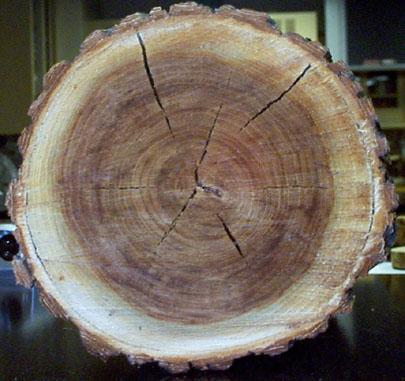
Cross section of an elm showing internal wetwood (brown region) on a dried elm log.
Phytoplasma Diseases
Ash Yellows
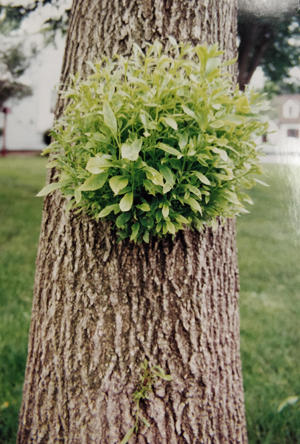
In addition to yellowing of leaves on the tree, poor growth and increased winter injury, ash yellows often produces witches' brooms on the trunk of trees
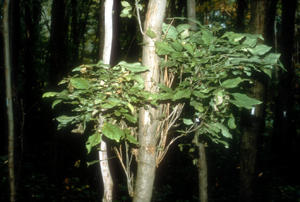
The leaves on the witches' broom are simple in comparison to the regular compound leaves produced by ash trees
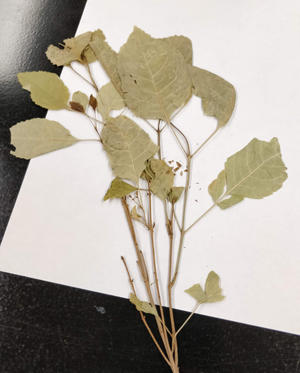
Stem from a witches' broom showing overall chlorosis and simple leaf growth instead of compound leaves.
Elm Yellows
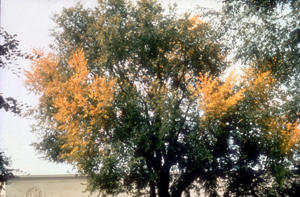
Elm yellows produces yellow leaves throughout the crown. The disease is lethal and irreversible.
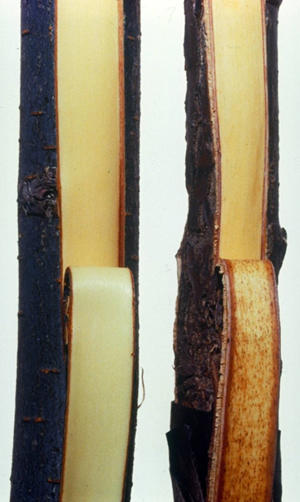
Phytoplasmas colonize the phloem and infected trees have discolored phloem tissue. Here the bark has been peeled back from branches on an infected tree (right) showing the discoloration on the phloem side and not the xylem. A healthy tree is on the left. For trees with Dutch elm disease, the discoloration would be in the xylem and not phloem. Elm yellows also produces methyl salicylate which has a minty/wintergreen or root beer aroma. The aroma produced is very faint so pieces of the phloem can be cut from the tree, placed in a closed jar for some time and then opened to test for the smell of the minty aroma.